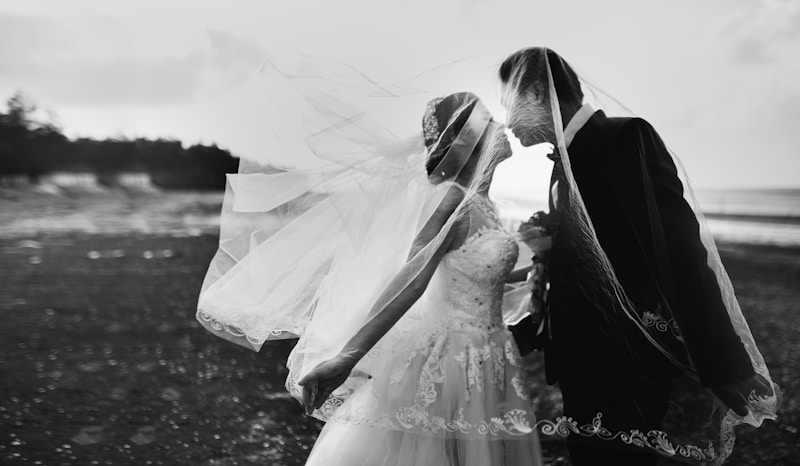Sustainable Materials for Eco-Friendly Wedding Trains: The Ultimate Guide
Sustainable Materials for Eco-Friendly Wedding Trains: The Ultimate Guide
Introduction
As couples become more conscious of their impact on the environment, the wedding industry is experiencing a significant shift towards sustainability. One of the most beautiful yet often overlooked aspects of a wedding is the wedding train. This article explores the various sustainable materials available for creating eco-friendly wedding trains, helping you make responsible choices without compromising on aesthetics.
Why Choose Sustainable Materials?
Opting for sustainable materials for eco-friendly wedding trains not only reduces your carbon footprint but also aligns with a growing trend towards ethical consumption. Many brides are now looking for ways to incorporate eco-friendly practices into their special day. Below are some compelling reasons to make this choice:
- Environmental Benefits: Sustainable materials often come from renewable resources, reducing the demand for non-renewable inputs. This leads to lower emissions and less waste.
- Supporting Local Artisans: Many sustainable materials are sourced from local artisans, thereby supporting local economies and promoting traditional crafts.
- Unique Styles: Eco-friendly wedding trains often feature unique designs that you won’t find in mass-produced options.
Popular Sustainable Materials for Eco-Friendly Wedding Trains
Here’s a detailed list of sustainable materials that can be used in the creation of wedding trains:
| Material | Description | Benefits |
| Organic Cotton | Made from natural fibers without the use of toxic pesticides. | Soft, breathable, and biodegradable. |
| Tencel | A fabric made from sustainably sourced wood, particularly eucalyptus trees. | Biodegradable and produced in a closed-loop system, reducing environmental impact. |
| Bamboo | A fast-growing plant that requires minimal water and chemicals. | Soft to touch, naturally antibacterial, and biodegradable. |
| Recycled Polyester | Made from recycled plastic bottles, offering a sustainable alternative to virgin polyester. | Reduces plastic waste and maintains the properties of regular polyester. |
| Silk (Peace Silk) | Silk produced without harming silkworms, allowing them to complete their lifecycle. | Luxurious feel and appearance while being cruelty-free. |
| Hemp | A hardy plant that thrives without pesticides and requires little water. | Durable, biodegradable, and grows rapidly, making it sustainable. |
Designing Your Eco-Friendly Wedding Train
When designing an eco-friendly wedding train, consider the following tips:
- Opt for Minimalism: A simple and elegant design requires fewer materials and gives a timeless look.

- Accessorize Wisely: Use sustainable embellishments like dried flowers or biodegradable sequins to enhance your train without compromising its eco-friendliness.
- Repurpose Materials: Incorporate vintage lace or fabric from family heirlooms to create a unique and meaningful wedding train.
- Personalization: Customize your train with eco-friendly dyes made from natural sources, ensuring it reflects your personal style.
Where to Source Sustainable Materials
Finding sustainable materials requires some research, but multiple sources are available:
- Local Fabric Stores: Many cities have shops specializing in organic and sustainable textiles.
- Online Retailers: Look for websites that focus on eco-friendly products, such as Etsy or specialized eco-conscious wedding boutiques.
- Farmers’ Markets: Some local farmers’ markets now feature vendors who sell handmade organic fabrics.
Real-Life Examples of Eco-Friendly Wedding Trains
Many real-life weddings have beautifully showcased sustainable wedding trains:
- Beach Wedding: A bride wore a soft Tencel wedding train adorned with seashells, perfectly complementing her coastal setting.
- Rustic Barn Ceremony: A bride crafted her wedding train from vintage lace, adding a touch of nostalgia to her eco-friendly wedding.
- Forest Enchantment: Using repurposed silk, a bride’s train had flowing lines, mimicking the natural beauty of the surroundings.
Color Options for Sustainable Wedding Trains
Another aspect to consider is the color of your wedding train. Natural dyes derived from plants, minerals, or insects can be used to achieve beautiful hues. Here are some popular color options:
- Earthy Tones: Colors like olive green, rust, and beige complement natural settings.
- Pastels: Soft shades like blush and lavender can be achieved using organic pigments for a romantic feel.
- Bold Statements: A deeper color like burgundy or navy can provide a striking contrast against a natural background, achieved via sustainable dyes.
FAQs about Eco-Friendly Wedding Trains
What makes a wedding train environmentally friendly?
An eco-friendly wedding train uses sustainable materials that minimize environmental impact, such as organic or recycled fabrics.
Can I rent a sustainable wedding dress with a train?
Yes! Many rental services now offer eco-friendly dresses, allowing you to wear a stunning gown without the commitment of ownership.
Are eco-friendly wedding trains more expensive?
While some sustainable materials may have a higher upfront cost, you may save money in other ways, such as choosing a simpler design or using repurposed fabrics.
Conclusion
Choosing sustainable materials for eco-friendly wedding trains not only benefits the planet but also offers a unique and personalized touch to your wedding. By selecting organic cotton, Tencel, or recycled polyester, you can create a stunning train that aligns with your values. Remember to consider design, sourcing, and color preferences to make your wedding truly memorable and environmentally responsible. As you plan your special day, keep in mind the importance of making informed choices that reflect both style and sustainability. With the right materials and creativity, your wedding train can be a breathtaking centerpiece while still being gentle on the planet.
Remember: Sustainability is not just a trend but a lifestyle choice that promotes a healthier planet for future generations.
